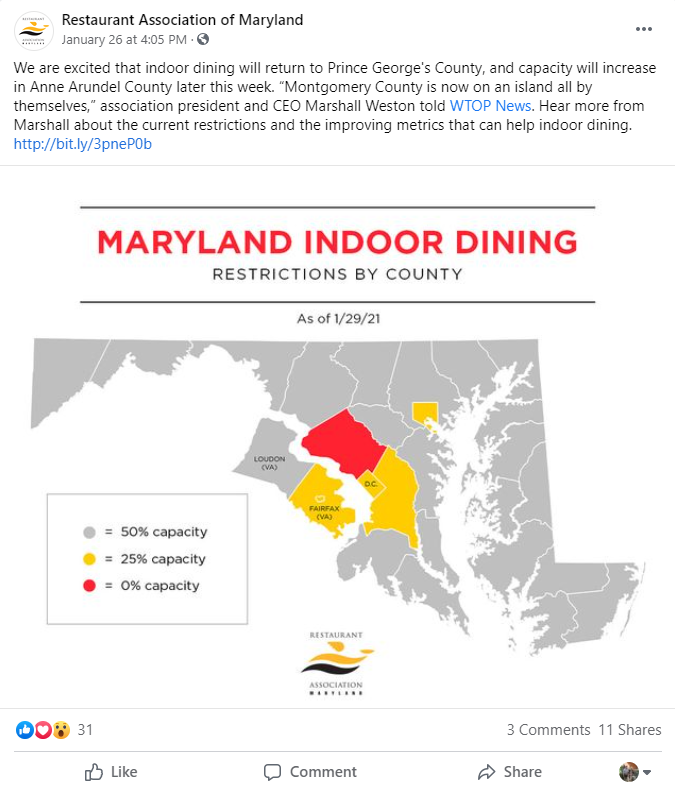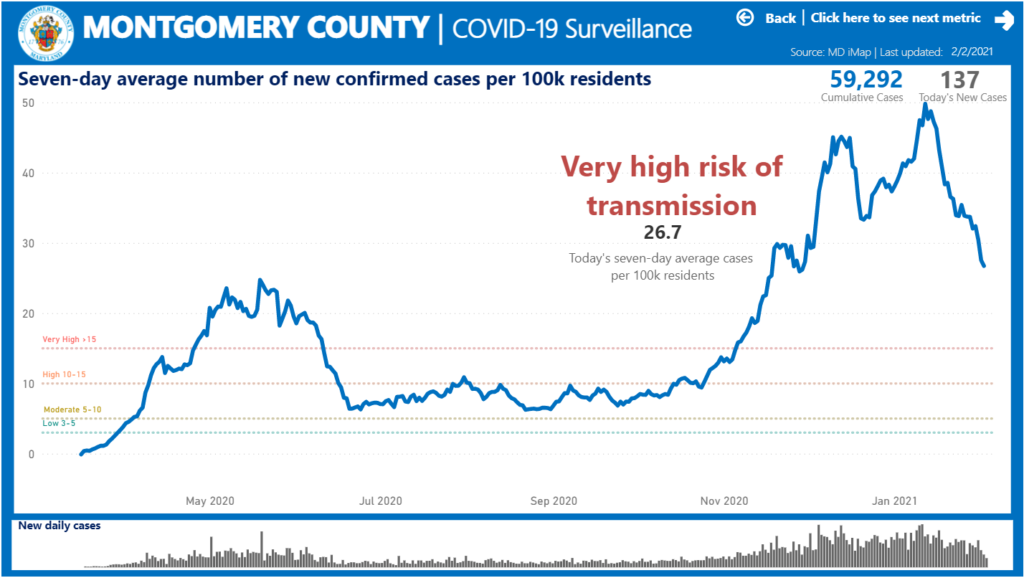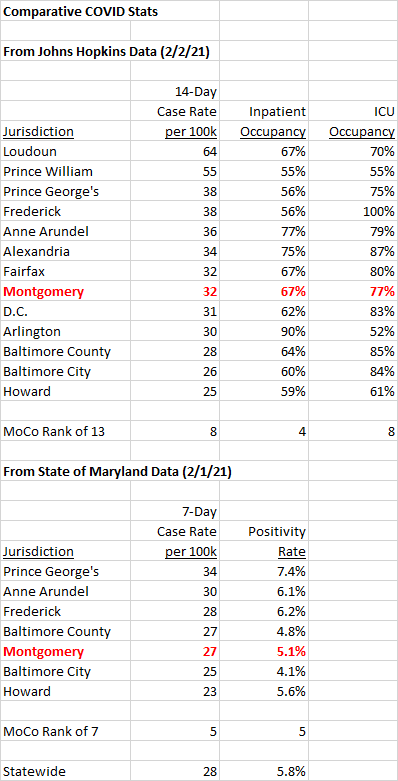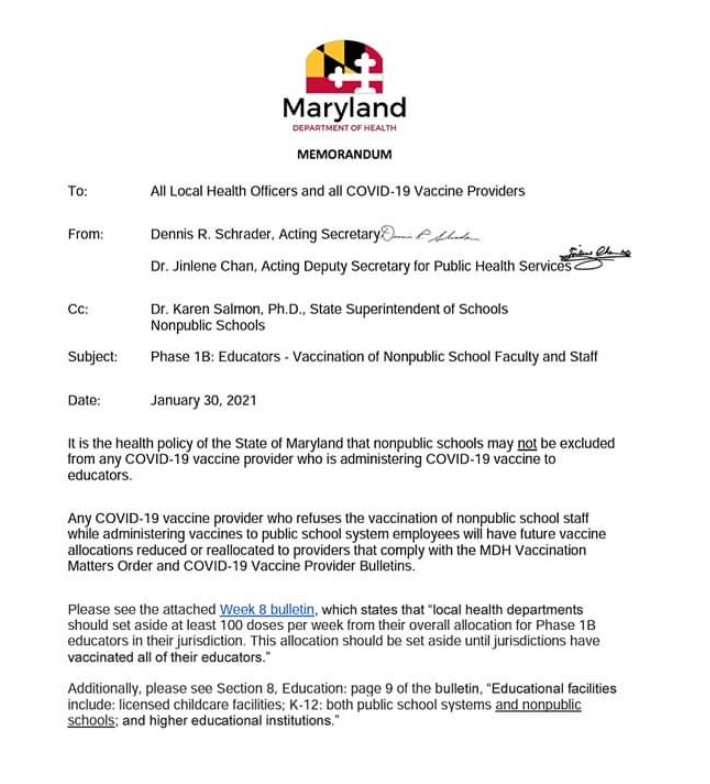By Adam Pagnucco.
Minutes ago, the Montgomery County Education Association (MCEA) released a statement that their worksite representatives had passed a resolution expressing “a lack of confidence” in MCPS’s reopening plan. Their statement and the text of the resolution appear below.
*****
FOR IMMEDIATE RELEASE
Tuesday, February 16, 2021
Contact on behalf of Montgomery County Education Association:
Kiwana Hall, Communications Director
khall@mceanea.org
Montgomery County Education Association Statement on Lack of Confidence Resolution
In response to the inadequacy of the reopening plan approved by the Montgomery County Public Schools Board of Education on February 9th, elected worksite representatives of the Montgomery County Education Association have overwhelmingly passed a resolution stating a lack of confidence in the plan developed under the leadership of and recommended by the Chief of Teaching, Learning, and Schools.
MCEA’s highest level decision-making body, the Representative Assembly, held an emergency meeting on February 15th to discuss the resolution. Over one thousand members and representatives attended. The full resolution is available here.
The current MCPS plan to reopen school facilities cannot be successfully implemented – requiring more resources, more people, and more space than is available – without negatively impacting students’ learning experience.
MCEA members demand that MCPS adhere to CDC guidelines regarding the physical reopening of school buildings, implement a contact tracing and testing program, and provide all employees the opportunity to be fully vaccinated before a return to in-person instruction.
The system must also develop a building reopening plan for the adequate staffing of all instructional models, particularly those that directly serve Black and Brown students, and students impacted by poverty, without diminishing access to staff and services that supplement required direct instruction.
MCEA cannot support the current plan, which will only increase inequity in Montgomery County schools. MCEA has requested a meeting with the Board of Education to discuss the MCPS reopening plan. MCEA urges the Board of Education to take the time to meet with educators.
*****
The text of MCEA’s resolution appears below.
*****
WHEREAS the safety and health of Montgomery County Public School (MCPS) employees and students is a priority in school system operations, and
WHEREAS the global pandemic of COVID-19 has impacted Montgomery County, Maryland with more than 61,000 cases and more than 1,350 deaths, and
WHEREAS a return to in-person instruction requires human and capital resources that significantly exceed those of a pre-COVID era, and
WHEREAS a return to in-person instruction requires a sustainable instructional model, which allows for all students to receive a free and appropriate education, and
WHEREAS the MCPS Chief of Teaching, Learning and Schools is responsible for the development of a coherent and effective plan for instruction, and
WHEREAS the plan approved by the MCPS Board of Education on Tuesday, February 9, 2021, cannot be implemented with existing resources, does not adequately protect the health and safety of employees and students, and diverts resources from Black and Brown children, and children impacted by poverty, the majority of whose families have indicated through the MCPS survey a preference for remaining in distance learning.
Therefore be it RESOLVED, the Montgomery County Education Association (MCEA) has no confidence in the plan developed under the leadership of and recommended by the Chief of Teaching, Learning and Schools.
Be it further RESOLVED, the MCEA demands that MCPS shall provide the opportunity to all employees to be fully vaccinated prior to a return to school, and
Be it further RESOLVED, the MCEA demands that MCPS shall develop and implement a coherent contact tracing and weekly diagnostic testing program in line with CDC guidelines prior to any return to worksites, and
Be it further RESOLVED, the MCEA demands that MCPS shall transparently and robustly communicate to employees, families, and community information related to COVID-19 contraction and transmission at the classroom and worksite level, and
Be it further RESOLVED, the MCEA demands that MCPS shall adequately staff all instructional models, particularly those which directly serve Black and, Brown students, and students impacted by poverty, without diminishment of access to staff and services that supplement required direct instruction, and
Be it further RESOLVED, the MCEA calls for the BOE to adhere to all CDC guidelines regarding the physical reopening of school buildings which includes but is not limited to mitigation measures, and phased-in reopening of schools based on the zone metrics (Blue, Yellow, Orange, Red), and
Be it further RESOLVED, the MCEA calls for the BOE to adhere to CDC guidelines regarding the ventilation in worksites and environmental air quality of work sites. If any worksite does not have safe ventilation in all rooms, MCPS will install HEPA and other filters to block the spread of the Covid-19 virus. Further, MCPS shall release all test results for each worksite, office, and classroom to all stakeholders before requiring unit members to have to return to any worksites.







